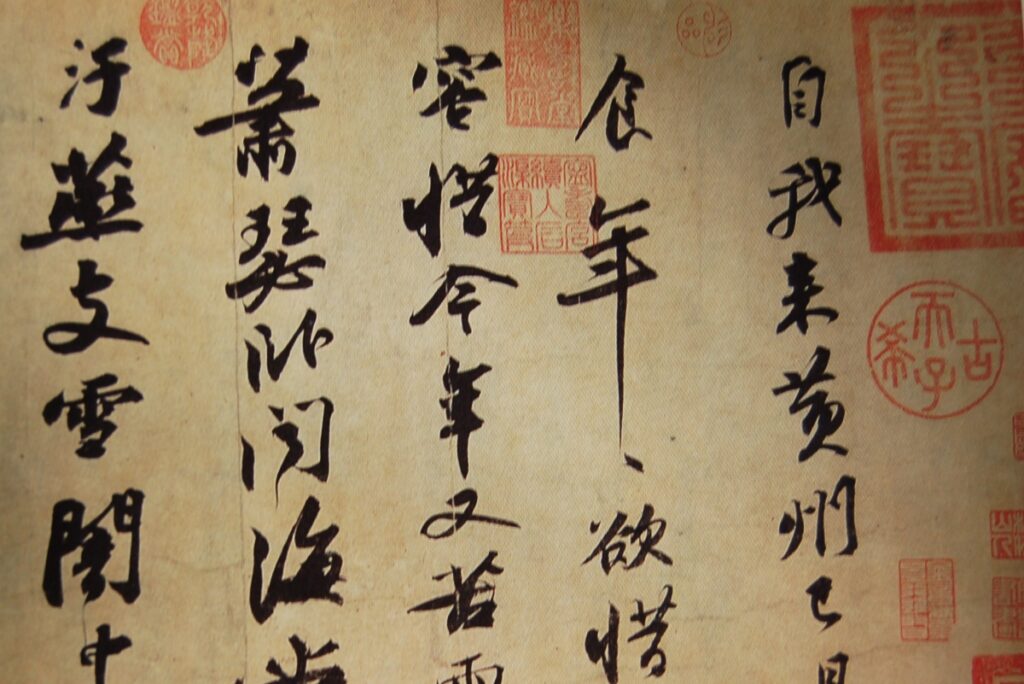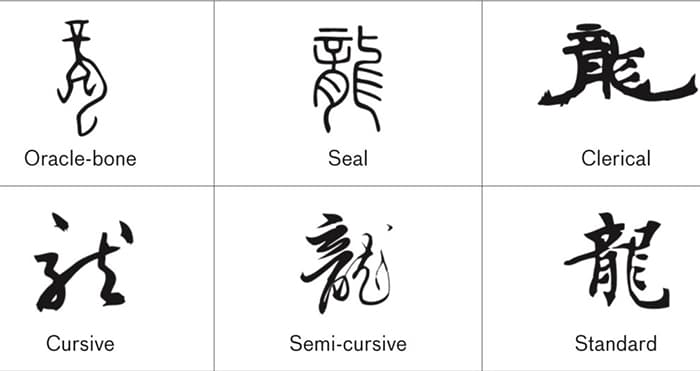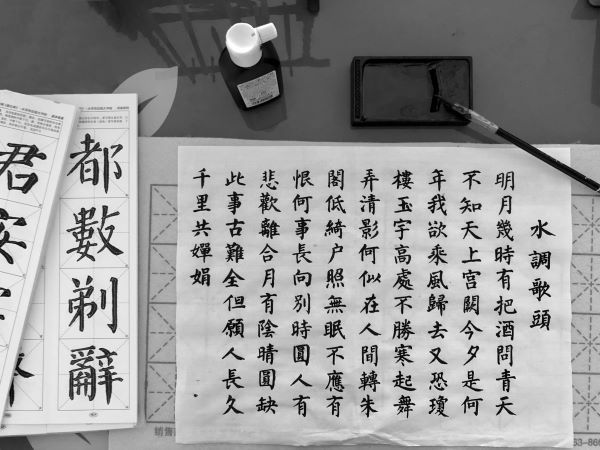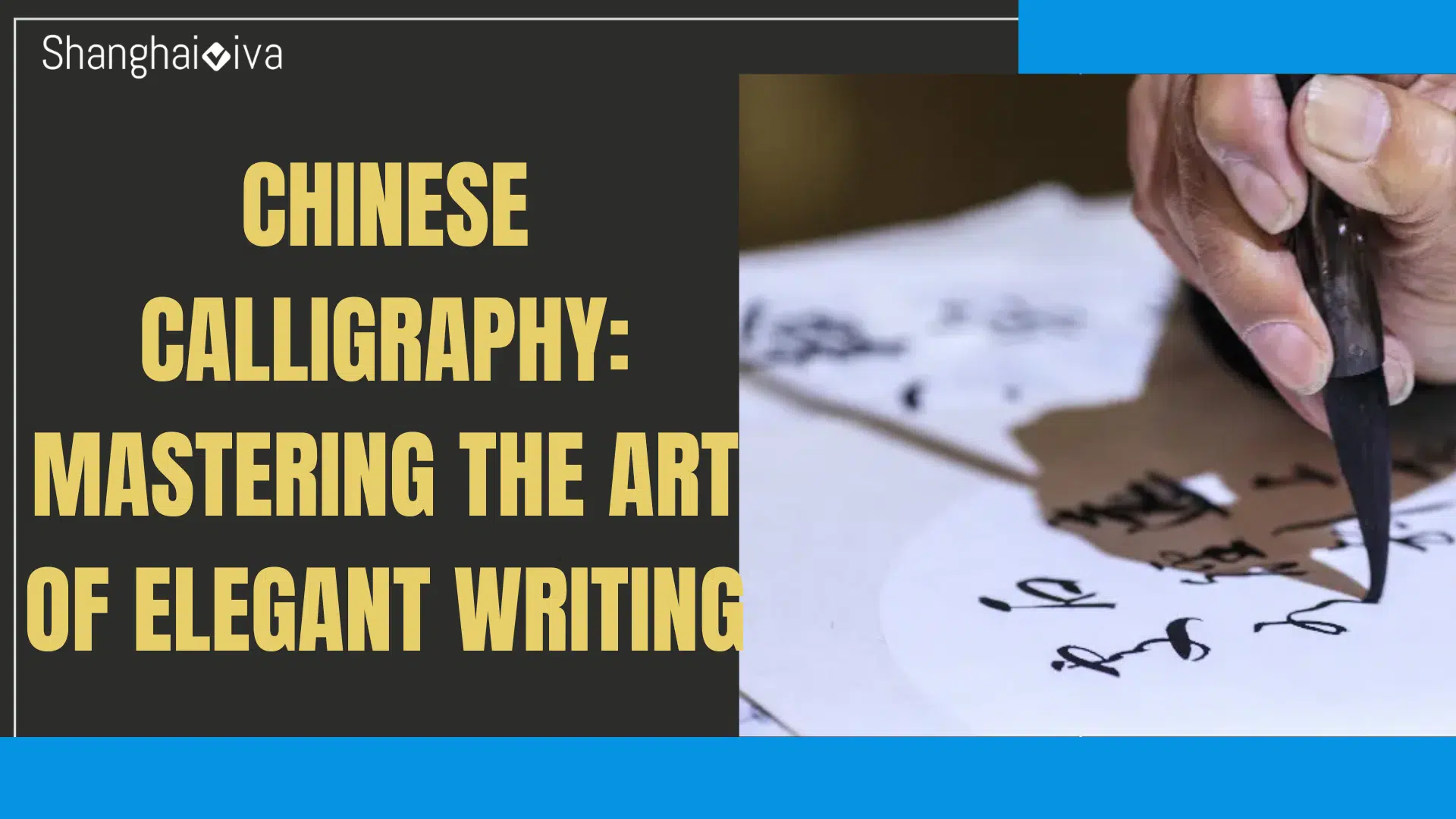Dive into the world of Chinese calligraphy and master the art of elegant writing. Discover the history, techniques, and cultural significance of this traditional art form.
Introduction

Chinese calligraphy, also known as “Shufa” in Chinese, is an ancient art form that has been cherished for centuries. Combining aesthetics, philosophy, and skill, Chinese calligraphy is considered one of the highest forms of artistic expression in Chinese culture. It is not merely writing; it is a visual art that conveys the beauty of Chinese characters through elegant brushwork and harmonious compositions. Let’s delve into the world of Chinese calligraphy and discover the art of mastering this timeless craft.
The Beauty of Chinese Calligraphy
Chinese calligraphy is admired for its elegant and expressive brushwork, which transforms written characters into captivating works of art. Here’s what makes Chinese calligraphy so beautiful:
- Brushwork: Each stroke in Chinese calligraphy is carefully planned and executed. The way the brush glides across the paper, varying in thickness and intensity, creates a sense of rhythm and flow.
- Composition: Chinese calligraphy is more than just individual characters; it is also about the overall composition of the artwork. Artists pay great attention to the placement and balance of the characters on the page, creating visually pleasing and harmonious arrangements.
- Harmony: Chinese calligraphy embodies the concept of harmony, both in its physical form and philosophical meaning. The strokes and characters must harmonize with one another, creating a sense of balance and unity.
- Emotional Expression: Chinese calligraphy allows artists to convey their emotions through the brushwork. Whether it’s a sense of calmness, strength, or tranquility, these emotions are expressed through the strokes and ink patterns on the paper.
The History of Chinese Calligraphy
Chinese calligraphy has a rich history that dates back to ancient times. It has been practiced for thousands of years and has evolved into distinct styles influenced by different dynasties and regions. Here are some key periods in the history of Chinese calligraphy:

- Oracle Bone Script: The earliest form of Chinese calligraphy can be traced back to the Shang Dynasty (ca. 1600-1046 BC). Oracle bone script was carved onto animal bones or turtle shells for divination purposes. The characters were pictographic and evolved into more abstract forms over time.
- Seal Script: During the Qin Dynasty (221-206 BC), seal script became the official script for imperial seals and administrative documents. It is characterized by its square, elongated shapes and uniformity of strokes.
- Clerical Script: Clerical script emerged during the Han Dynasty (206 BC-220 AD) as a more simplified and stylized form of calligraphy. The characters became more angular and structured, with clear differentiation between strokes.
- Regular Script: Regular script, also known as “Kai Shu,” developed during the Han Dynasty as a standardized script for official documents. It features balanced and flowing strokes, becoming the foundation for later calligraphic styles.
- Running Script: Running script, or “Xing Shu,” evolved during the Eastern Han Dynasty (25-220 AD). It is characterized by its cursive and flowing brushwork, making it more flexible and expressive.
- Cursive Script: Cursive script, or “Cao Shu,” is a highly stylized and fluid form of calligraphy that emerged during the Jin Dynasty (265-420 AD). It is characterized by its rapid strokes and simplified characters.
- Semi-Cursive Script: Also known as “Xing Cao,” semi-cursive script combines elements of running script and regular script. It strikes a balance between legibility and artistic expression, allowing for greater improvisation with brushwork.
- Modern Styles: Over time, various modern styles of calligraphy have emerged, including contemporary brush calligraphy and grass script. These styles showcase the artistic experimentation and individuality of modern calligraphers.
Mastering Chinese Calligraphy
Becoming proficient in Chinese calligraphy requires practice, patience, and a deep understanding of the art form. Here are some steps to help you master the art of Chinese calligraphy:
Study the Basics
Start by familiarizing yourself with the basic strokes and fundamental rules of Chinese calligraphy. Learn how to hold the brush correctly, control the pressure, and understand the structure and order of strokes for each character.
Learn the Scripts
Explore different calligraphic scripts, starting with the regular script, and gradually progress to the more cursive styles. Study the characteristics and unique features of each script to develop a well-rounded understanding of Chinese calligraphy.
Practice Character Writing
Practice writing individual characters repeatedly to improve your brushwork and stroke control. Begin with simpler characters and gradually progress to more complex ones. Pay attention to stroke order, balance, and proportion.
Emulate Masters
Study the works of famous calligraphers and master calligraphy techniques by copying their work. Try to replicate their brushwork and style to gain insights into different artistic approaches.
Find a Teacher
Consider taking formal classes or finding a calligraphy teacher who can guide you in your learning journey. A teacher’s expertise and feedback can greatly enhance your understanding and skills in Chinese calligraphy.
Practice Mindful Calligraphy
Chinese calligraphy is not just about technical skills; it is also about the artist’s state of mind. Practice calligraphy with a calm and focused mindset, immersing yourself in the brushwork and rhythm of the characters.
Explore Personal Style
Once you have mastered the basics, don’t be afraid to explore your own style and experiment with different techniques. Express your unique personality and emotions through your calligraphy, adding your personal touch to the art form.

The Significance of Chinese Calligraphy
Chinese calligraphy holds profound cultural and philosophical significance in Chinese society. Here are some key aspects of its significance:
Cultural Heritage: Chinese calligraphy is an integral part of Chinese cultural heritage, representing thousands of years of artistic tradition and accomplishment.
Artistic Expression: Chinese calligraphy is a way for artists to express their emotions, ideas, and individuality through the brushwork and composition of the characters.
Educational Value: Calligraphy has long been regarded as an essential part of education in China. It is believed to cultivate discipline, patience, and aesthetic taste in students.
Character Development: The practice of Chinese calligraphy is seen as a means of character cultivation, as it requires discipline, concentration, and perseverance.
Meditative Practice: Creating calligraphy is often regarded as a form of meditation, allowing the artist to be fully present in the moment and experience a sense of calm and tranquility.
Conclusion
Chinese calligraphy is much more than a form of writing; it is an art that embodies the beauty and spirit of Chinese culture. Through brushwork, composition, and personal expression, calligraphy artists create visual poetry that captivates the viewer’s imagination. Whether you’re a beginner or an experienced artist, diving into the world of Chinese calligraphy offers a deep appreciation for the elegance and grace of this ancient art form. So, grab your brush, immerse yourself in the rhythmic strokes, and embark on a journey of mastering the art of Chinese calligraphy.

